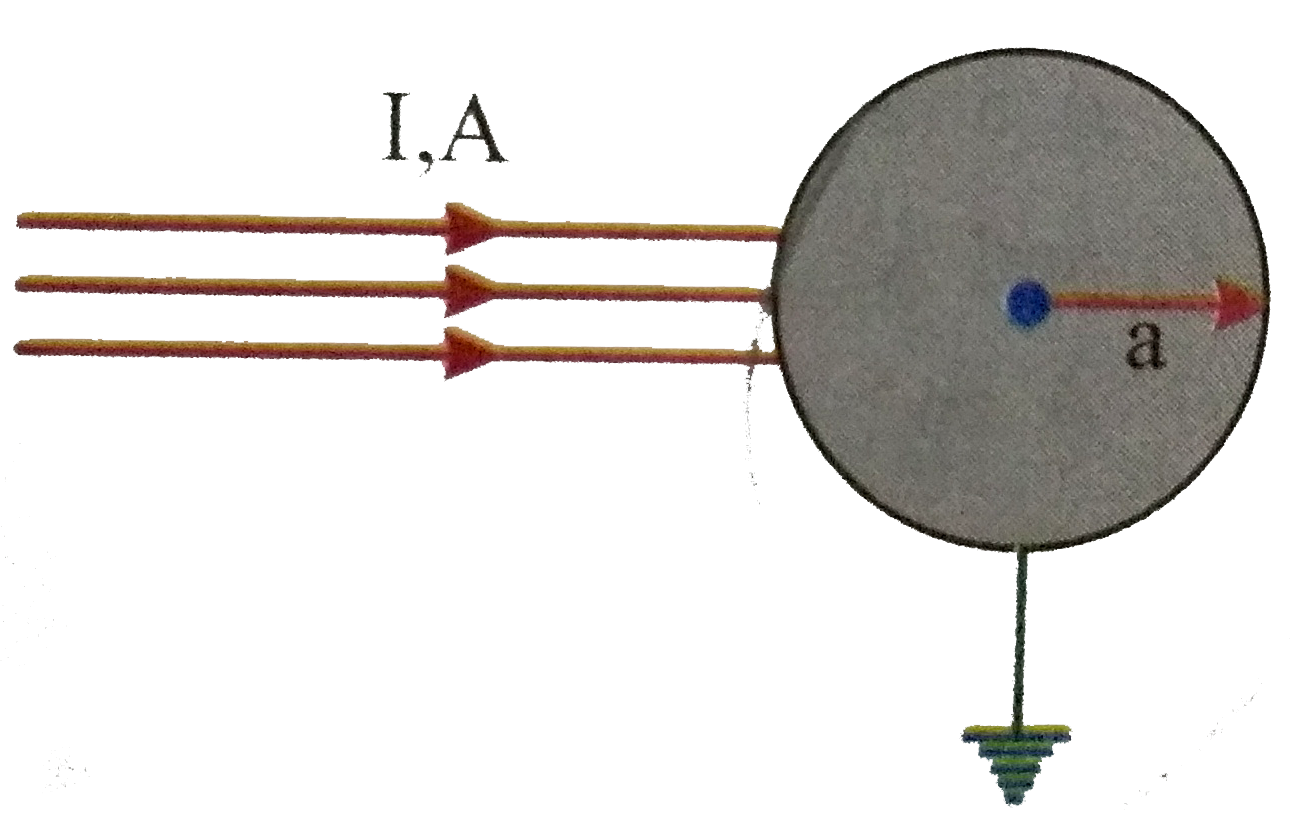Complete Solutions to HIGHER ORDER THINKING SKILLS of chapter DUAL NATURE OF RADIATION AND MATTER of Class 12 book with complete answers and questions
| Class 12 | PHYSICS |
| Chapter | DUAL NATURE OF RADIATION AND MATTER |
| NCERT FINGERTIPS | HIGHER ORDER THINKING SKILLS |
| Number Of Questions | 8 |
| Academic Year | 2023-24 |
(a) Estimate the speed with which electrons emitted from a heated cathode of an evacuated tube impinge on the anode maintained at a potential difference of 500 V with respect to the cathode. Ignore the small initial speeds of the electrons. The specific charge to of the electron, i.e., its `e//m` is given to `1.76xx10^(11)Ckg^(-1)`.
(b) Use the same formula you employ in (a) to obtain electron speed for an anode potential of 10 MV. Do you see what is wrong? In what way is the formula to be modified?
View SolutionTwo particles A and B of de-broglie wavelength `lambda_(1) and lambda_(2)` combine to from a particle C. The process conserves momentum. Find the de-Broglie wavelength of the particle C. (The motion is one dimensional).
View SolutionA silver of radius `1 cm` and work function `4.7 eV` is suspended from an insulating thread in freepace. It is under continuous illumination of `200 nm` wavelength light. As photoelectron are emitted the sphere gas charged and acquired a potential . The maximum number of photoelectron emitted from the sphere is `A xx 10^(e) (where 1lt A lt 10)` The value of `z` is
View SolutionA proton is fired from very far away towards a nucleus with charge Q = 120 e, where e is the electronic charge. It makes a closest approach of `10fm` to the nucleus. The de - Broglie wavelength (in units of fm) of the proton at its start is take the proton mass, `m_p = 5//3xx10^(-27) kg, h//e = 4.2xx10^(-15) J-s//C`, `(1)/(4piepsilon_0) = 9xx10^9m //F, 1 fm = 10^(-15)`.
View SolutionTwo metallic plates `A and B` , each of area `5 xx 10m` are placed parallel to each other at a separation of 1 cm . Plate B carries a positive charge of 33.7 pc . A monochromatic beam of light, with photons of energy 5 eV each, starts falling on plate A at t = 0, so that 10 photons fall on it per square meter per second. Assume that one photoelectron is emitted for every 10 incident photons. Also assume that all the emitted photoelectrons are collected by plate B and the work function of plate A remains constant at the value 2 eV . Electric field between the plates at the end of 10 seconds is
View SolutionIn question number 5, find the kinetic energy of the most energetic photoelectron emitted at t = 10 s when it reaches plate B.
(Neglect the time taken by the photoelectron to reach plate B)
View SolutionWhen a beam of `10.6 eV` photons of intensity `2.0 W //m^2` falls on a platinum surface of area `1.0xx10^(-4) m^2` and work function `5.6 eV, 0.53%` of the incident photons eject photoelectrons. Find the number of photoelectrons emitted per second and their minimum and maximum energy (in eV).
Take `1 eV = 1.6xx 10^(-19) J`.
View SolutionA parallel beam of monochromatic radiation of cross-section area `A(lt pi a^(2))`, intensity `I` and frequency `v` is incident on a solid conducting sphere of work function`phi_(0)[hv gt phi_(0)]` and radius `'a'`. The sphere is grounded by a conducting wire. Assume that for each incident photon one photoelectron is ejected. Just after this radiation is incident on initially unchanged sphere, the current through the conducting wire is:

View Solution
HIGHER ORDER THINKING SKILLS questions and complete solutions for chapter DUAL NATURE OF RADIATION AND MATTER of MTG PHYSICS (ENGLISH) of Class 12
All Exercises from NCERT FINGERTIPS Class 12 PHYSICS DUAL NATURE OF RADIATION AND MATTER
- ASSERTION & REASON CORNER
- Assertion And Reason
- DAVISSON AND GERMER EXPERIMENT
- EINSTEIN S PHOTOELECTRIC EQUATION : ENERGY QUANTUM OF RADIATION
- Einstein'S Photoelectric Equation : Energy Quantum Of Radiation
- ELECTRON EMISSION
- EXEMPLAR PROBLEMS
- EXPERIMENTAL STUDY OF PHOTOELECTRIC EFFECT
- HIGHER ORDER THINKING SKILLS
- INTRODUCTION
- NCERT Exemplar
- PARTICLE NATURE OF LIGHT : THE PHOTON
- PHOTOELECTRIC EFFECT
- WAVE NATURE OF MATTER